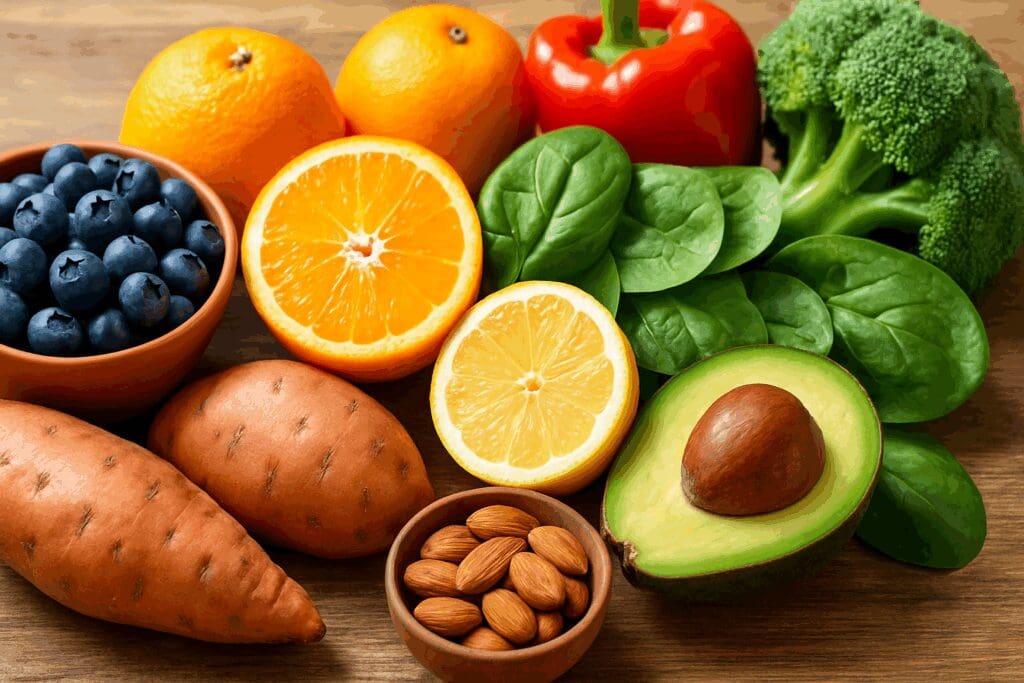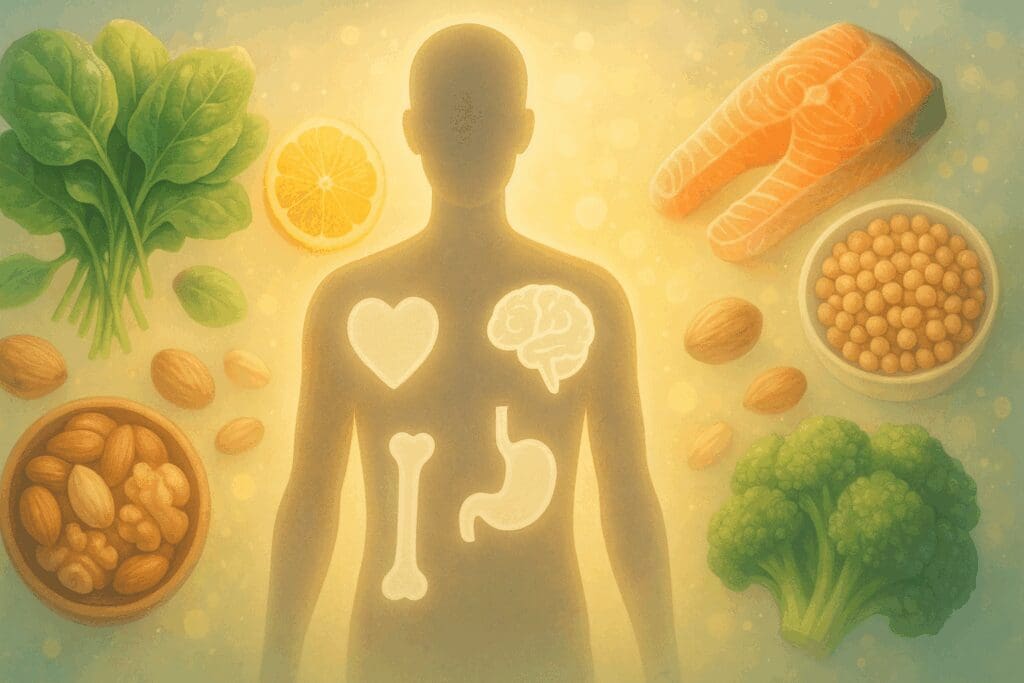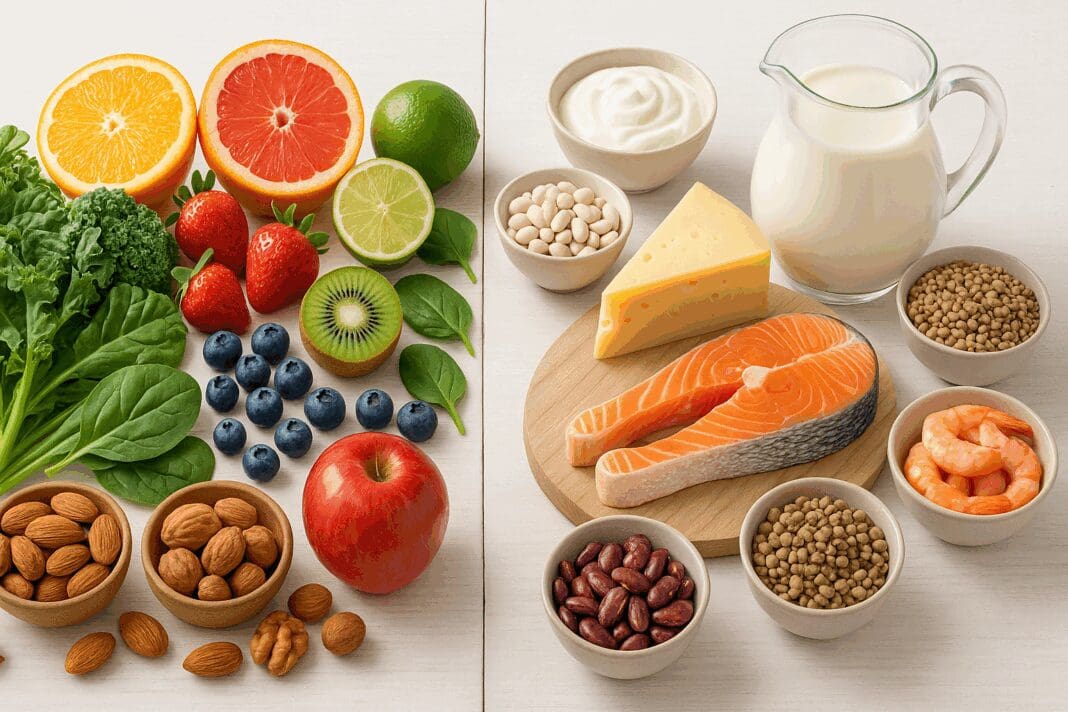In the ever-expanding universe of nutrition, few distinctions are as vital and foundational as understanding the difference between vitamins and minerals. For anyone committed to a health-conscious diet, this distinction isn’t merely academic—it serves as a practical cornerstone for daily dietary choices, supplement regimens, and overall wellness strategies. Although both vitamins and minerals are essential nutrients, they differ in their chemical nature, biological functions, sources, and the way the human body utilizes and stores them. Recognizing the unique characteristics of each can empower individuals to cultivate more informed, balanced, and effective dietary habits.
The essentiality of these micronutrients lies not just in their individual roles but in how they interact to support immune function, energy production, bone health, neurological activity, and cellular repair. The synergy between nutrients is as significant as their standalone effects. Consequently, when people talk about nutrient deficiencies or superfoods, they often refer to a complex interplay of these compounds. While the surface-level differences may seem intuitive, the biochemical nuances offer deeper insight into why this subject deserves careful attention.
Vitamins are organic compounds, meaning they contain carbon and are often derived from living organisms. They are fragile, sensitive to heat, light, and air, and can easily degrade during cooking or storage. In contrast, minerals are inorganic elements sourced from the earth or water, maintaining their chemical integrity under most conditions. This distinction influences how each is absorbed, how they behave in the body, and how dietary sources or supplements should be handled for optimal benefit. With this groundwork in place, we can begin a more granular exploration of their definitions, classifications, food sources, and functional significance.
You may also like: 12 Foods You Should Eat Every Day for Powerful Nutritional Benefits

Understanding Vitamins: Organic Micronutrients with Critical Functions
Vitamins are categorized into two primary groups: fat-soluble and water-soluble. Fat-soluble vitamins include A, D, E, and K. These are stored in the body’s fatty tissues and the liver, meaning they do not need to be consumed daily, but also that overconsumption can lead to toxicity. Water-soluble vitamins, including the B-complex group and vitamin C, are not stored in large quantities and require consistent dietary intake.
Each vitamin plays a specific and often irreplaceable role in bodily functions. Vitamin A is indispensable for vision and skin health, while vitamin D aids calcium absorption and bone integrity. Vitamin E acts as a powerful antioxidant, and vitamin K is essential for blood clotting. Within the B-complex, vitamins like B1 (thiamine), B6 (pyridoxine), and B12 (cobalamin) support neurological function and energy metabolism, while folate is critical during pregnancy for fetal neural development. Vitamin C, apart from its famed immune support, facilitates iron absorption and collagen synthesis.
Sources of vitamins are primarily plant and animal foods. For instance, vitamin C is abundant in citrus fruits and bell peppers, whereas B12 is almost exclusively found in animal products like eggs, dairy, and meat. Cooking methods can influence vitamin retention; water-soluble vitamins can leach into boiling water, while prolonged exposure to heat can degrade many types. Thus, raw or lightly cooked preparations often preserve vitamin content better.
Understanding the vitamin definition in food contexts requires acknowledging that these nutrients are not calorie-providing but are critical catalysts in metabolic processes. Their presence, even in minute amounts, can determine the efficiency and balance of many physiological systems. Therefore, the concept of vitamin rich foods extends beyond quantity to include bioavailability—how well a vitamin is absorbed and utilized.

What Are Minerals in Nutrition? The Inorganic Foundations of Vital Health
The term “minerals definition nutrition” refers to inorganic elements that originate in the soil and water and are absorbed by plants or consumed directly through food. Unlike vitamins, minerals retain their structure regardless of heat, air, or light exposure, making them stable and enduring components of any diet. They are classified into two categories: major minerals and trace minerals.
Major minerals—such as calcium, phosphorus, magnesium, sodium, potassium, and chloride—are required in larger amounts. They are integral to functions like fluid balance, muscle contraction, and bone strength. For example, calcium is not only central to bone formation but also to signaling pathways in muscle cells. Trace minerals, needed in smaller quantities, include iron, zinc, selenium, iodine, and copper. These are no less essential; iron is critical for oxygen transport in the blood, while zinc supports immune defense and wound healing.
Mineral foods include a wide variety of both plant and animal sources. Dairy products are rich in calcium and phosphorus, while leafy greens like spinach offer magnesium and iron. Seafood provides iodine and selenium, and red meat is a potent source of zinc and heme iron. The term “essential minerals” reflects their non-negotiable role in sustaining human health, especially because the body cannot synthesize them. This mandates consistent intake from external sources.
A deeper appreciation of foods that provide minerals also requires attention to factors that influence absorption. For instance, oxalates in spinach can inhibit calcium absorption, while vitamin C enhances iron uptake. Therefore, combining mineral-rich foods with complementary nutrients can significantly improve bioavailability. Understanding these interactions adds a level of sophistication to nutrition planning that extends beyond merely consuming mineral foods in isolation.

The Biochemical Difference Between Vitamins and Minerals: Why It Matters
To truly grasp the difference between vitamins and minerals, one must explore their chemical and biological distinctions. Vitamins are complex molecules with a range of chemical compositions that determine their reactivity and function. Minerals, in contrast, are elements—the simplest forms of matter. This fundamental difference dictates how each behaves within the body.
For example, vitamin C (ascorbic acid) is a complex organic molecule sensitive to oxidation, while iron is a basic element that can change valence states, enabling it to bind oxygen in hemoglobin. This chemical simplicity gives minerals a resilience and versatility that vitamins lack. Moreover, since vitamins are synthesized by plants and animals, their availability is influenced by species, environmental conditions, and maturity. Minerals, however, are found in the earth and enter the food chain through soil, water, and consumption by plants and animals.
These biochemical distinctions influence dietary planning and supplement formulation. Vitamins are more likely to degrade during processing or improper storage, necessitating careful handling. Minerals, being stable, are more forgiving but can still interact with other compounds in ways that affect absorption or cause side effects. For instance, excessive calcium intake may inhibit magnesium and zinc absorption, underscoring the importance of balance.
From a functional standpoint, both vitamins and minerals serve as cofactors in enzymatic reactions, yet their mechanisms differ. Vitamins often act as coenzymes or components of coenzymes that assist in the transfer of chemical groups. Minerals typically serve as catalysts or structural components. This functional divergence further exemplifies why a health-conscious diet must be both diverse and strategically planned.

Vitamin Rich Foods and Their Role in Disease Prevention
A health-conscious diet is incomplete without a consistent supply of vitamin rich foods. Beyond merely preventing deficiencies like scurvy or rickets, vitamins play protective roles against chronic diseases. Antioxidant vitamins like C and E neutralize free radicals, reducing the risk of cellular damage linked to aging and cancer. Vitamin D has been implicated in immune modulation, with studies showing correlations between adequate levels and reduced susceptibility to autoimmune diseases.
The link between diet and chronic disease is now well established in medical literature, with observational and interventional studies alike supporting the protective effects of high-vitamin diets. Diets abundant in foods with vitamins are associated with reduced incidences of cardiovascular disease, cognitive decline, and even certain types of cancer. For example, folate from leafy greens may lower the risk of neural tube defects in infants and may also play a role in colorectal cancer prevention.
The diversity of vitamin rich foods also supports dietary sustainability. Instead of relying on supplements alone, which may lack synergistic compounds found in whole foods, individuals are encouraged to prioritize natural sources. Carrots and sweet potatoes offer beta-carotene, a precursor to vitamin A; citrus fruits deliver potent doses of vitamin C; and nuts and seeds provide vitamin E. These foods also contain fiber, phytonutrients, and healthy fats that enhance overall nutritional value.
The emphasis on whole foods also aligns with public health strategies aimed at improving population-level dietary habits. Encouraging the consumption of colorful fruits and vegetables ensures a spectrum of vitamins that work synergistically. This approach is particularly critical in addressing disparities in health outcomes that stem from dietary inadequacies across different socioeconomic groups.

Foods That Provide Minerals: Enhancing Strength, Energy, and Immunity
Just as with vitamins, the importance of foods that provide minerals cannot be overstated. These foods are not just supplemental options; they are foundational components of any health-conscious diet. Whole grains, legumes, nuts, seeds, dairy, meats, and a variety of vegetables all contribute essential minerals that fortify bodily functions.
Calcium-rich foods like yogurt, cheese, and fortified plant milks are indispensable for maintaining bone density, especially in postmenopausal women and aging populations. Iron-rich foods such as red meat, lentils, and tofu support oxygen transport and energy metabolism. Magnesium, found in almonds, avocados, and dark leafy greens, contributes to over 300 enzymatic processes, including muscle function and neurotransmitter regulation.
Zinc and selenium, though required in trace amounts, have profound effects on immune health. Zinc accelerates wound healing and supports innate immunity, while selenium acts as a cofactor for antioxidant enzymes like glutathione peroxidase. Seafoods, Brazil nuts, and organ meats are potent sources of these trace elements.
Given the environmental and agricultural factors that influence mineral content in soil and water, regional variability must be acknowledged. For example, iodine deficiency remains a concern in landlocked areas where seafood consumption is low. In such cases, iodized salt serves as a public health intervention. The understanding of what foods have minerals and how to combine them for optimal absorption is an advanced yet essential skill in personal and public health nutrition.
Why Understanding the Difference Between Vitamins and Minerals Is Vital for Dietary Planning
One of the most practical applications of knowing the difference between vitamins and minerals lies in crafting balanced meal plans. Because each class of nutrient behaves differently, knowing how to pair foods, time their intake, and adjust for bioavailability can significantly enhance nutrient absorption and efficacy. For instance, pairing iron-rich plant foods with vitamin C sources can enhance non-heme iron absorption, while avoiding calcium supplements with iron-rich meals prevents competitive inhibition.
Additionally, understanding the stability of minerals versus the fragility of vitamins can inform cooking methods. Steaming vegetables preserves water-soluble vitamins better than boiling, while roasting nuts does not compromise their mineral content. These insights translate into smarter food preparation strategies that preserve nutritional integrity.
In the context of supplementation, awareness of the difference between vitamins and minerals ensures more intelligent choices. Multivitamin formulations must consider the interactions between ingredients, and individuals must be cautious about dosages. Water-soluble vitamins are less likely to cause toxicity but must be consumed more frequently, while fat-soluble vitamins and some minerals can accumulate to harmful levels if taken excessively.
Moreover, nutritional needs vary across life stages, health conditions, and lifestyle factors. Athletes may need more magnesium and B vitamins for energy metabolism, pregnant women require folate and iron, and older adults may benefit from calcium and vitamin D. Recognizing these nuances helps personalize dietary approaches that align with health goals and physiological needs.

Exploring Nutrients, Minerals, and Vitamins Through a Holistic Lens
The trio of nutrients, minerals, and vitamins forms the bedrock of a functional diet. While macronutrients provide energy, it is these micronutrients that fine-tune physiological processes and ensure optimal performance. A deficiency in even a single vitamin or mineral can trigger cascading health problems, from subtle fatigue to severe organ dysfunction.
A holistic nutritional approach looks beyond individual nutrients to examine how dietary patterns, lifestyle, and even mental health influence nutritional status. Stress, for instance, can deplete magnesium and vitamin B6, while poor gut health can impair the absorption of fat-soluble vitamins. Integrating probiotic-rich foods and adopting stress-management techniques thus become part of a comprehensive nutritional strategy.
Furthermore, seasonal and regional eating habits impact the availability and variety of nutrients, minerals, and vitamins. Understanding these patterns can inform more sustainable and personalized dietary decisions. The concept of bio-individuality acknowledges that no one diet suits everyone. Genetic variations, metabolic rates, and health histories all influence nutrient requirements.
Nutrigenomics, the study of how genes interact with nutrition, is an emerging field that further highlights the importance of individualizing dietary approaches. Some people may be genetically predisposed to poor vitamin D synthesis or increased iron retention, necessitating tailored intake recommendations. This scientific advancement underscores the continued relevance of understanding the role of each micronutrient within broader health contexts.
What Are the 6 Major Vitamins and Why They Matter Most
When it comes to dietary planning, knowing what are the 6 major vitamins can serve as a helpful framework. These include vitamins A, B-complex, C, D, E, and K. Each represents a category that includes several compounds with diverse but equally vital functions. Understanding their significance can guide food choices and supplementation decisions.
Vitamin A, in its active form retinol, is crucial for vision, immunity, and skin health. It is sourced from both animal products like liver and plant-based carotenoids from carrots and sweet potatoes. The B-complex group, which encompasses B1 through B12, plays indispensable roles in energy metabolism, nerve function, and red blood cell formation. Deficiencies in B vitamins can manifest as fatigue, irritability, and cognitive impairments.
Vitamin C, beyond its well-known immune benefits, aids in collagen production, enhancing skin and joint health. It also acts as a powerful antioxidant, scavenging harmful free radicals. Vitamin D, synthesized in the skin through sun exposure and also found in fortified foods, supports calcium absorption and immune modulation. Vitamin E protects cell membranes from oxidative stress, while vitamin K regulates blood clotting and bone metabolism.
These six vitamins form the foundation of preventive health strategies. Their presence in foods with vitamins such as fruits, vegetables, dairy, grains, and meats allows for diverse and palatable dietary options. Whether obtained through diet or supplementation, ensuring adequate intake of these major vitamins is crucial for long-term health maintenance.
Frequently Asked Questions (FAQ)
How Do Micronutrient Deficiencies Manifest in Modern Diets?
Micronutrient deficiencies often go unnoticed in their early stages, particularly in diets that rely heavily on processed foods. While calorie intake might be sufficient, the absence of vitamin rich foods and mineral foods can lead to “hidden hunger,” a condition in which nutrient needs are unmet despite adequate energy consumption. Symptoms like fatigue, irritability, brain fog, and frequent infections may be early indicators of poor micronutrient status. In developed countries, marginal deficiencies in essential minerals such as magnesium, zinc, and iron are increasingly common due to soil depletion and food processing. Investing in whole foods with vitamins and foods that provide minerals, rather than over-supplementing, is a more sustainable solution.
Can Cooking Methods Influence Nutrient Retention in Foods?
Absolutely. The way we cook our food can significantly impact the retention of nutrients, minerals, and vitamins. Water-soluble vitamins such as B-complex and vitamin C are highly sensitive to heat and tend to leach into cooking water, especially during boiling. On the other hand, minerals are more stable but can still be lost if cooking water is discarded. Steaming, roasting, and stir-frying are preferred methods for preserving both vitamin and mineral content. Understanding the vitamin definition in food should include awareness of how cooking methods affect nutrient density.
What Role Do Soil and Agriculture Play in Nutritional Content?
Soil health directly influences the minerals definition in nutrition. Crops grown in mineral-depleted soil are less likely to contain optimal levels of essential minerals, even if they appear fresh and vibrant. Over-farming, chemical fertilizers, and monoculture practices diminish the diversity and concentration of nutrients in plants. This has led to increased interest in regenerative agriculture and soil remineralization techniques aimed at boosting the nutrient profile of plant-based foods. When asking what foods have minerals, it’s also crucial to ask how and where those foods were grown, as location and farming practices play a significant role.
How Does Stress Affect Nutrient Absorption and Utilization?
Chronic stress can impair the body’s ability to absorb and utilize nutrients efficiently. Stress hormones like cortisol alter digestion and reduce stomach acid, which is essential for mineral absorption, particularly magnesium and calcium. Stress also increases the body’s requirement for vitamin C and several B vitamins, leading to faster depletion. Even if a person consumes vitamin rich foods, stress can compromise their bioavailability. Including adaptogenic herbs and practicing mindfulness may support nutrient retention and make foods with vitamins and foods that provide minerals more effective.
Why Is the Difference Between Vitamins and Minerals Crucial for Supplement Planning?
Understanding the difference between vitamins and minerals is key when designing an effective supplement regimen. Vitamins, being organic compounds, are more prone to degradation and require careful handling. Minerals, on the other hand, are inorganic and interact differently with the body, often competing for absorption. For instance, high doses of calcium can inhibit iron absorption if taken simultaneously. Awareness of these interactions helps prevent imbalances and maximizes the efficacy of supplemental intake. A well-structured plan that honors the unique characteristics of nutrients, minerals, and vitamins can enhance overall wellness.
How Can You Optimize Nutrient Synergy Through Meal Pairing?
Combining specific foods enhances the bioavailability of both vitamins and minerals. For example, consuming vitamin C-rich fruits like oranges or strawberries with iron-rich lentils can significantly improve iron absorption. Similarly, pairing fats with fat-soluble vitamins such as A, D, E, and K improves their uptake. A diet rich in diverse vitamin rich foods and mineral foods allows for natural nutrient synergy. This strategy is particularly useful in vegetarian and vegan diets, which may lack some animal-derived nutrients but can achieve balance through strategic pairings. Awareness of what foods have minerals and their optimal combinations can turn every meal into a more nourishing experience.
Exploring the Social Implications of Nutrient Inequality
Nutrient inequality is a growing concern, particularly in marginalized communities that lack access to fresh produce or fortified foods. Economic constraints often lead to reliance on ultra-processed options that are calorically dense but nutrient-poor. The result is a higher prevalence of deficiencies in essential minerals and water-soluble vitamins. Public health initiatives must go beyond calorie counting and focus on nutrient density. Promoting education around the difference between vitamins and minerals, as well as encouraging access to foods with vitamins and foods that provide minerals, is essential for closing the health gap.
How Is the Industry Evolving Around Nutrient-Enriched Foods?
Food innovation is making strides in enhancing the nutritional value of commonly consumed products. Fortification and biofortification are leading the way in creating foods that provide minerals and vitamins without drastically altering consumer habits. For instance, vitamin D-fortified milk and iron-enriched cereals are becoming standard in many markets. More advanced techniques include bioengineered crops like zinc-rich rice and selenium-enriched grains. These innovations are driven by a deepening understanding of what are minerals in nutrition and how essential they are for global health. As the field evolves, we can expect a greater alignment between convenience foods and micronutrient sufficiency.
What Are the Psychological Effects of Long-Term Nutrient Imbalance?
Beyond physical symptoms, long-term imbalances in nutrients, minerals, and vitamins can have profound psychological effects. Deficiencies in B vitamins and magnesium have been linked to increased anxiety, depression, and mood instability. Iron deficiency can lead to irritability and cognitive fog, particularly in children and adolescents. These connections are often overlooked in mental health discussions but are crucial for a comprehensive treatment approach. A consistent intake of vitamin rich foods and mineral foods supports not just physical but emotional resilience as well. In this light, nutritional psychiatry is emerging as a vital branch of integrative healthcare.
Why Knowing the Difference Between Vitamins and Minerals Is Essential for Aging Well
As we age, our body’s ability to absorb and synthesize nutrients declines, making dietary choices even more critical. The difference between vitamins and minerals becomes more pronounced in aging populations due to changes in metabolism, hormonal balance, and digestive efficiency. For example, older adults often have reduced stomach acid, affecting calcium and magnesium absorption. Similarly, decreased kidney function can impact the retention and excretion of certain minerals. A tailored approach that emphasizes nutrient-dense foods and supplements based on individual needs can enhance quality of life and longevity. Understanding what are the 6 major vitamins and ensuring adequate intake of essential minerals are foundational to graceful aging.
Conclusion: Mastering the Difference Between Vitamins and Minerals for Optimal Nutrition
Mastering the difference between vitamins and minerals is not a trivial academic exercise; it is a transformative step toward building a sustainable, intelligent, and responsive approach to nutrition. Each category of micronutrient plays indispensable roles in maintaining bodily systems, from metabolic efficiency to immune resilience and cognitive sharpness. The organic nature of vitamins and the elemental stability of minerals define their interactions with other nutrients, their resilience in cooking and storage, and their specific physiological functions.
As we’ve seen, the most effective way to secure adequate intake of both vitamins and minerals is through a diet rich in whole foods—from leafy greens and citrus fruits to dairy products and lean meats. Supplements may serve as valuable adjuncts in certain scenarios, but they should never replace the nuanced, synergistic benefits of real foods. With informed strategies that respect the complexity of nutrients, minerals, and vitamins, individuals can personalize their dietary plans to reflect their unique health status, lifestyle demands, and evolving needs.
This foundational knowledge also supports the broader goals of public health by equipping people to make choices that reduce disease risk, enhance vitality, and promote longevity. Whether you’re navigating pregnancy, aging, athletic training, or recovery from illness, knowing what foods have minerals, identifying vitamin rich foods, and recognizing nutrient synergies can make a tangible difference.
Ultimately, understanding the full landscape of what are minerals in nutrition and the biological definition of vitamins equips us not just to avoid deficiencies, but to thrive. It’s a commitment to nourishment that honors both science and self-care, transforming every meal into an opportunity for vibrant health and informed living.



